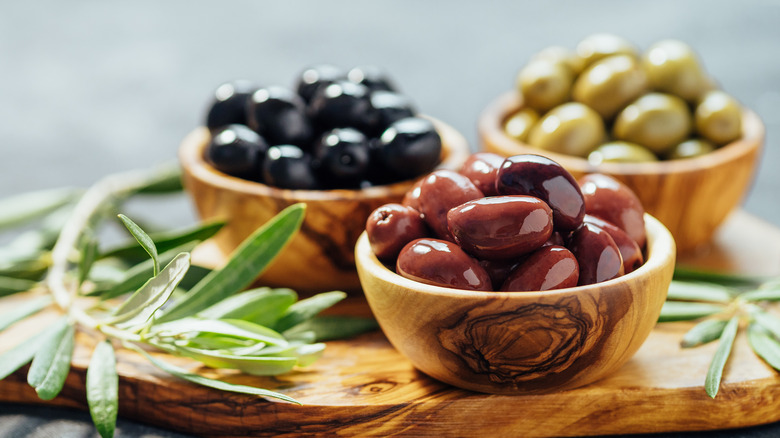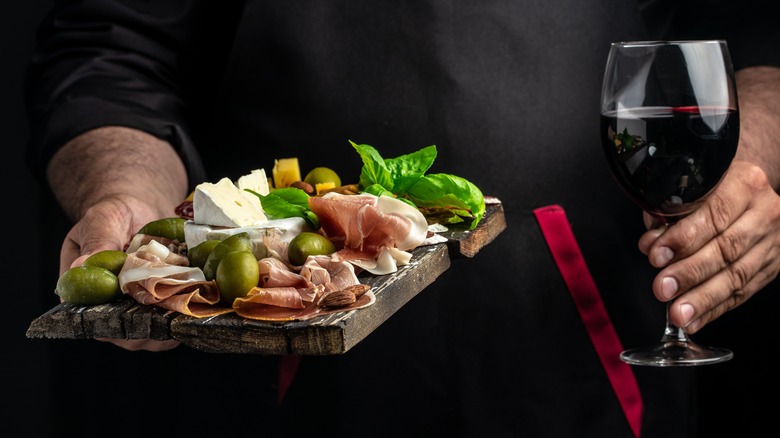How Olives Became The Stars Of Party Time Snacking
Find one floating in your dirty martini or as a component atop a charcuterie board — olives stealthily appear in the buzziest of social settings. Whether they're in fashion due to the association with Mediterranean culture or simply dependably appreciated for their bold flavor, the fruit's trending.
A penchant for olive's deliciously salty, pungent flavor dates back millennia, with cultivation noted since at least 3,500 B.C. in Crete. Prized during the Roman Empire, extolled by Muhammad, and economically esteemed throughout the Middle Ages, olives never waned from center stage. After all, a Mediterranean dish sans olive oil is hard to imagine.
Nowadays, they're an easily-Instagrammable bar snack, perfectly paired with low-ABV wine — the symbol of a recent Euro trip. Or they can be thrown onto a refreshing snack plate, riding along the "Girl Dinner" trend. But algorithm-based aesthetics aside, how did olives go from an agricultural stalwart to a newfound cultural cornerstone? Let's dig into the details of these brined bites.
History of the olive's revival in the U.S.
Looking past the ubiquitous black olives found on pizza, the American relationship with the fruit is young. A penchant for certain unique varieties — like the deliciously creamy and mild Castelvetrano — only kicked off in the last few decades. Largely, interest in the Mediterranean diet during the 1980s initiated a new lens on the fruit. And the intrigue hasn't faded, with only more sales increasing over the last decade.
Access to other types of olives – both through imports as well as travels to Europe — has enabled newfound applications. Not all olives exhibit the salty, mushy texture some find off-putting. So with more olive varieties available, there's a greater opportunity to find the perfect brined addition to a snack plate.
Recently, there's been an uptick in curing olives with engaging flavors, or sourcing from far-flung locales. As a relatively shelf-stable product that can transmit a slice of its origins, it's a jet setter mentality portable in one bite. Who doesn't want a bite of a Greek island during a night out?
The olive's synergy with alcohol
Another element of olives' party-time attendance is their relationship with booze. Of course, it doesn't get more iconic than their inclusion in a martini. Thrown into the stiff cocktail, the fruit not only adds a salty note but also intertwines with the other components of the drink. Plus, that final nibble is infused with the sling's liquors — who doesn't love that? With martinis established as classic cocktails, the olive's presence during a night out isn't fading anytime soon.
In addition to mixology, olives are part of another beloved drinking ritual — aperitivo hour. Across Northern Italy, the last hour of sunlight signals al fresco imbibing, with olives, chips, and other snacks accompanied by a refreshing spritz. The salty bites are a perfect catalyst for another sip, and to get the appetite flowing for the evening to come. A perfect ritual to replicate on a patio anywhere, not just amidst Italian cobblestone streets.


